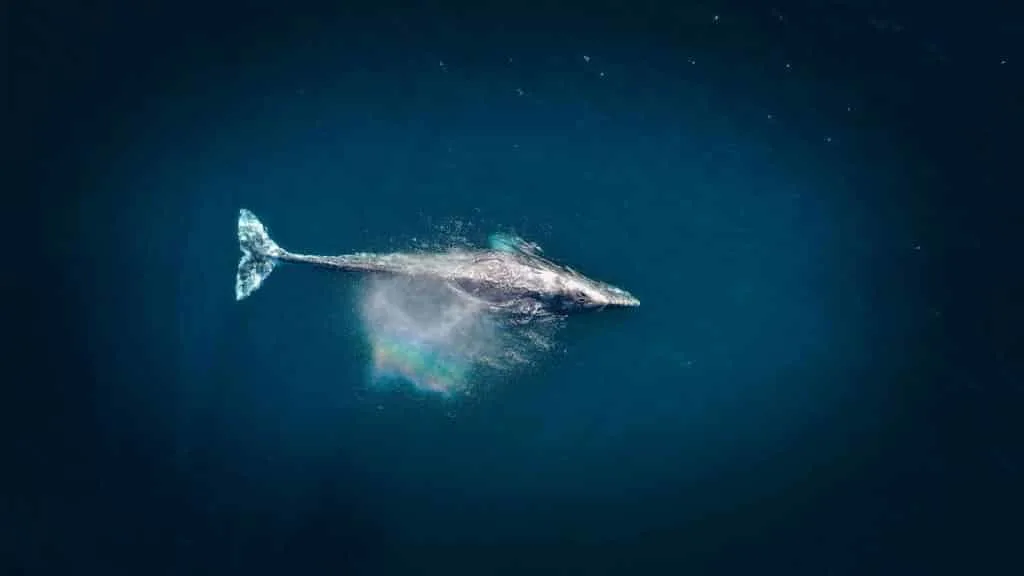Curious to meet the largest animal known to our planet?
Just close your eyes and think of the largest animal in the world; it’s easy to think of an elephant or even a Dinasour, but when you give it some more thought you will realize, like we did, that the Earth’s biggest creature is not on land but rather in the Oceans!
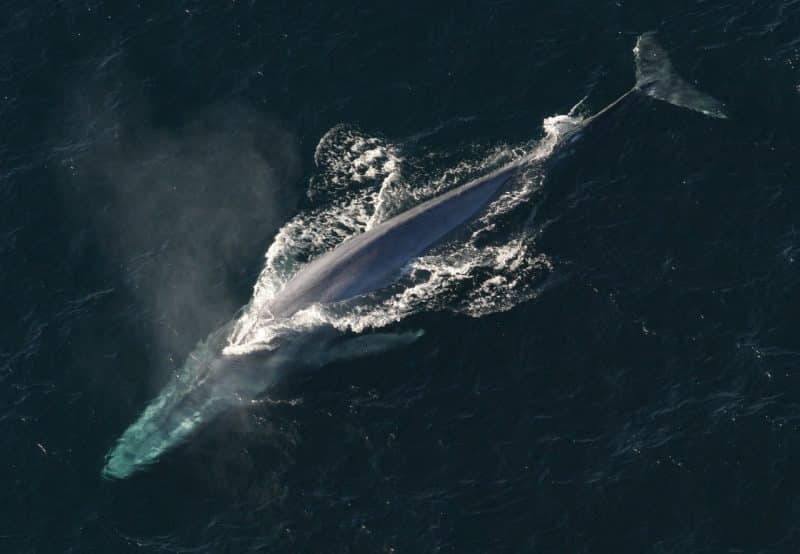
The blue whale is known to be the largest animal on Earth. Even baby blue whales are larger and heavier than most of the top 10 biggest animals in the world. Not only the size but other features like abundant food, the loudest sound, and the longest life make them known for it.
Want to swim ahead? Click below
Key Points
| Key Point | Description |
|---|---|
| Size | Blue whales are about 98 feet in length and weigh around 400,000 pounds. |
| Heart Size | The heart of a blue whale is about the same size as a small car. |
| Diet | Blue whales feed on krill and can consume up to 4 tons of krill daily during the feeding season. |
| Appearance | Blue whales appear blue underwater and blue-gray on the surface. Their undersides have a yellowish hue due to microorganisms. |
| Behavior | Blue whales swim primarily alone or in pairs and can swim more than five miles per hour. |
| Calves | Blue whale calves are already the largest animals at birth, weighing about 3 tons and measuring 25 feet long. |
| Growth | Blue whale calves gain about 200 pounds per day during their first year and experience a billion-fold increase in tissue in 18 months. |
| Body | Blue whales have a large head, a small fin near the fluke, and 80-100 long grooves along the throat and chest. |
| Breeding | Female blue whales become sexually mature at 5-15 years old and give birth every 2-3 years after a year-long gestation period. |
| Milk Production | Mother blue whales can produce 50 gallons of milk daily for their calves, which contains 30-50% fat. |
| Breathing | Blue whales have blowholes for breathing and come to the surface every 5-15 minutes. |
| Lifespan | Blue whales have long lifespans, with the oldest recorded whale being 110 years old and an average lifespan of 80-90 years. |
| Population Decline | The population of blue whales has significantly declined over time due to hunting and other factors. |
| Scientific Classification | Blue whales belong to the species of baleen whale and are classified as rorquals. |
The Blue Whales: The Largest Animal In The World
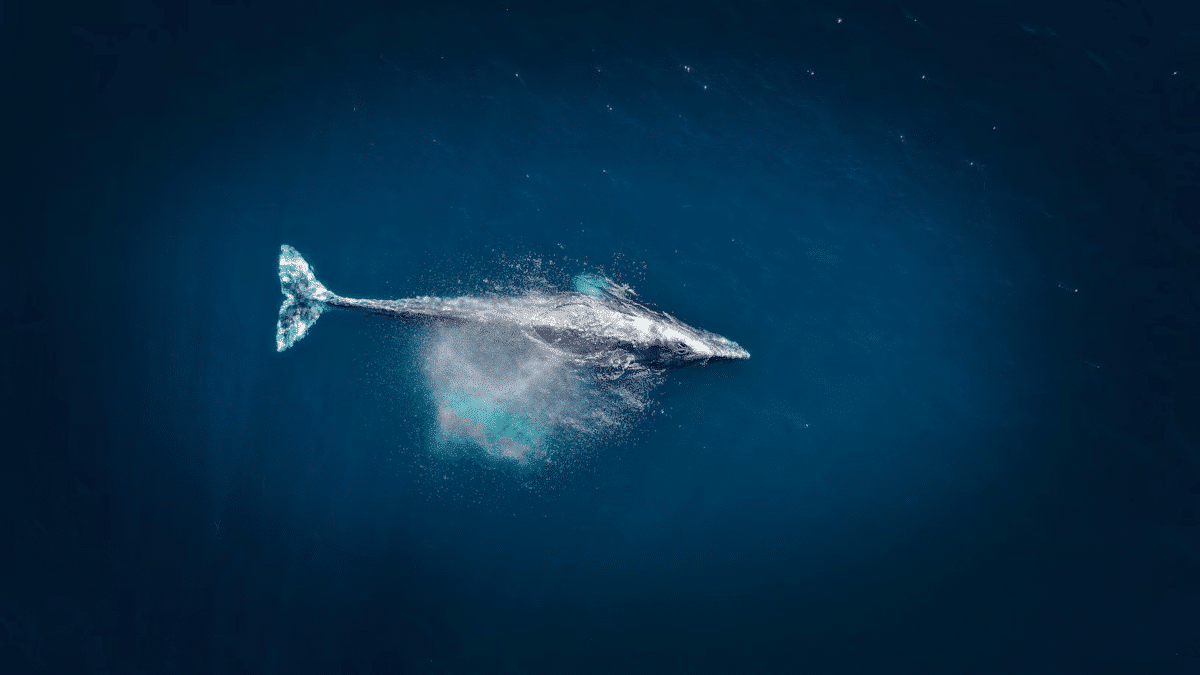
The blue whale is the largest animal in the world known until now. You may wonder why it is so. It is because this blue whale is about 98 feet in length and 400,000 pounds in weight.
It is not only about weight, size, food, and other factors. The heart size of this whale is the same as the small car you drive. The large blue whale feeds about 7936 pounds of krill daily during the feeding season.
Like many of us, you may have thought that the elephant should be known as the largest animal due to their giant appearance, but no. Even the tongue of this blue whale alone weighs equal to a whole elephant. If you want to explore the shocking characteristics of the longest blue whale ever recorded, feel free to explore on your own with our article about the longest blue whale ever recorded!
Diet of the blue whale
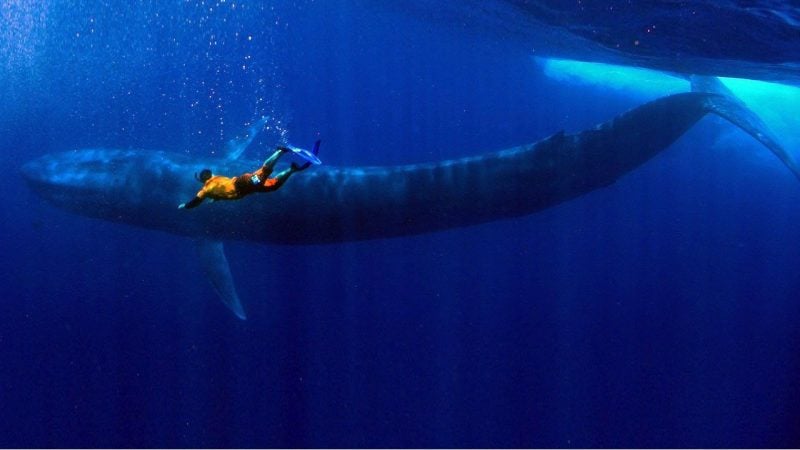
We have already discussed the diet and feed for the blue whales that they feed on krill. The krill is the shrimp animal, and the Antarctic blue whales eat up to 4 tons of krill daily. Yes, that big amount!
How can they eat so much? This is due to the certain unique features that they have. Blue whales are also called baleen whales because they have fringed plates and baleen attached to their upper jaws.
The large blue whales gulp a large amount of the water, and their skin expands on the throat so that water can reach their bellies and krills being swallowed.
Color and appearance
The blue whales look blue underwater, but when they come to the surface, the color slightly changes to blue-gray in appearance. Their bellies’ undersides look yellowish because there are many microorganisms.
The behavior of blue whales
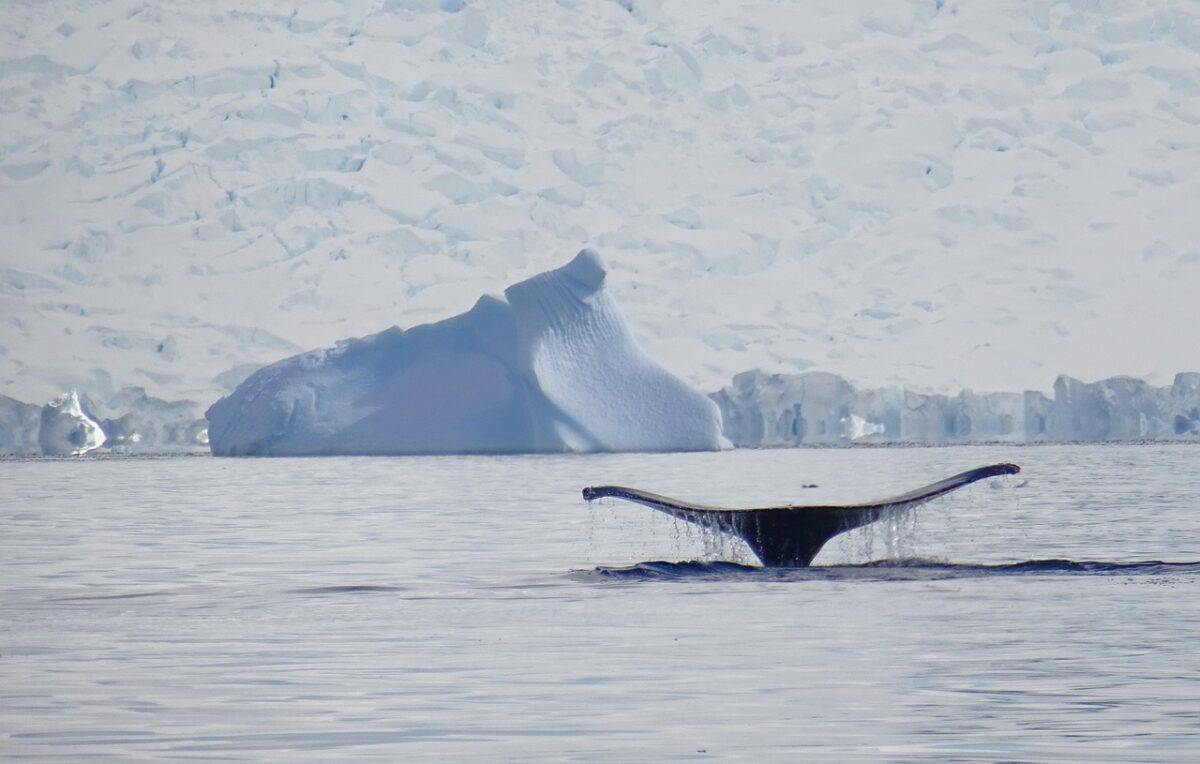
Blue whales live in almost all oceans. These swim in small groups often but primarily alone or in pairs. A blue whale has the potential to swim more than five miles just in one hour, and that’s incredible.
Discover the best places to see the majestic blue whale, with one of our other articles.
Blue whales are the loudest known animals in the world, as their groans, pulses, and moans are very loud. Also, they can hear each other from 1000 miles. So you can say that they are perfect in so many ways.
The calves
The babies of the blue whales, the calves, come into the world being called the largest animals already. The baby whale comes out of the mother’s womb, weighing about 3 tons and 25 feet long.
It feeds on mothers’ milk and gains weight of about 200 pounds each day during the first year of its growth, and that’s astonishing. The calve is known to have the fastest-growing rat in the animal world. There is a billion-fold increase in their tissue in only 18 months.
The body of the blue whale
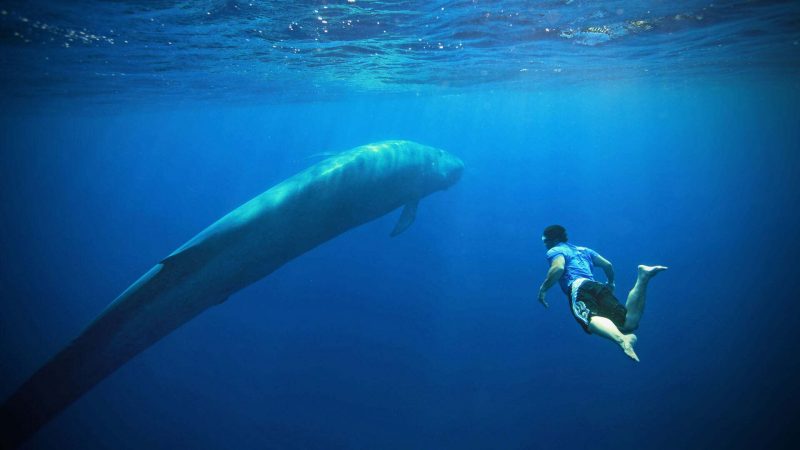
The giant blue whale has a big and wide head and a small fin near the fluke. It has 80-100 long grooves that usually run down the throat and chest of the blue whale.
The mouth of this blue whale has many plates of baleen, or you can call it whalebone. The whalebone has thick bristles, which the whale uses to catch food. If you talk about the gender of the whale, females are larger than male blue whales.
The Breeding behaviors
When the female blue whales are about 5-15 years old, they become sexually mature, and they can give birth to baby whales every 2-3 years. The gestation period of blue whales lasts about a whole year.
Blue whales are said to be born from December to February in regions of low altitudes. Don’t think that newborn baby blue whales will be small-sized like other animals or humans but bigger even than adults of other animals.
After giving birth to baby whales, the mother whales can produce 50 gallons of milk daily, which is a huge amount. The baby gains weight due to the mother’s milk, which contains 30-50% fats.
The mother’s milk, rich in fats, is why the baby blue whales gain a lot of weight; up to 10 pounds each hour equals 250 pounds each day. Yes, that is very astonishing but true indeed.
Nurturing of the baby whales
The mother blue whale carries the baby whale up on the water’s surface so it can breathe in the air for the first time. The other adult female blue whales around the baby help the newborn and encourage it to breathe in air.
Breathing of blue whale
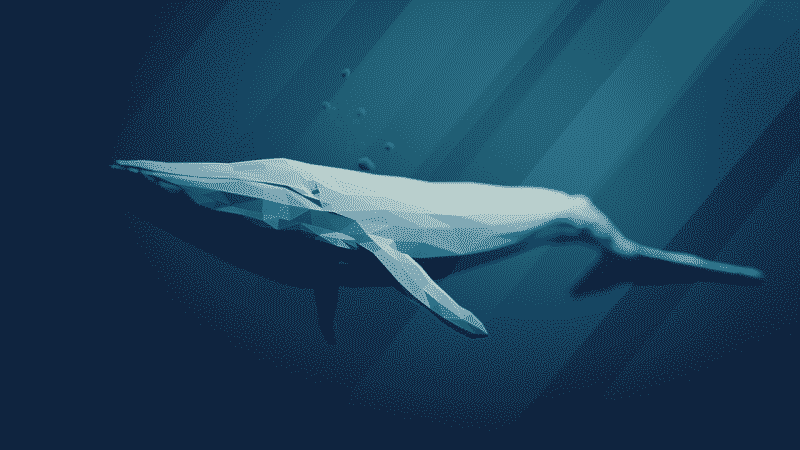
Like humans, blue whales also have a blowhole for breathing, like we have a nose to exchange air. The pressurized air is being sent due to the exhalation force. The blue whales come up to the surface after every 5-15 minutes.
Despite continuous breathing, blue whales have the potential to survive without breathing for a long time.
The lifespan of the blue whales
Blue whales are also known for their long lifespans and are considered the longest-lived animals on the planet. The oldest whale scientists have discovered until now was 110 years of age, while the average life is about 80-90 years.
An abundance of Blue Whales
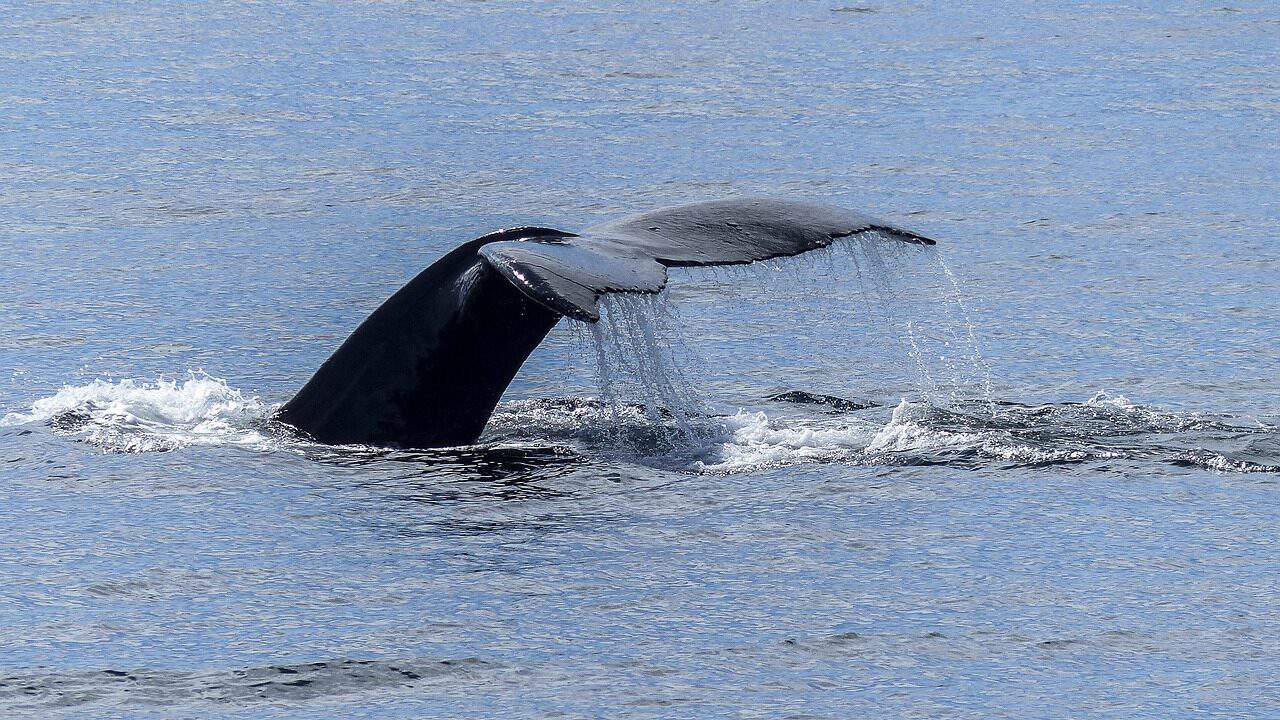
Once upon a time, blue whales, the world’s largest animals, were also found to be abundant. Unfortunately, the population of blue whales started declining at the start of the 20th century.
Surprisingly, about 350,000 blue whales were killed from 1904 to 1967 in the southern hemisphere, according to a survey conducted by the World Wildlife Fund. About 29000 blue whales were killed during the whaling heyday in a single day.
Some scientific facts
Let’s learn a little about the scientific facts related to this giant blue whale. The large blue whale is also called the sulfur-bottom whale. It belongs to the species of baleen whale, weighing about 150 tons.
The blue whale is also considered cetacean and classified in Cetacea as rorqual, which is somewhat related to the gray whale. These whales are called sulfur bottom due to the yellow-colored bottom due to the algae.
Wrapping Up with The Largest Animal In The World
So this article must have taught that blue whales are the largest animals. They have the biggest size and the largest length, and they eat a lot of food. They give birth to baby whales that are even bigger than adult animals.
Blue whales were once the most abundant animals in the world, but the population started decreasing eventually. Not only this, but they have the longest lives among all the animals.
Thanks for following along with us! Next up, Gorilla vs. Cobra.
Frequently Asked Questions (FAQs)
Q: What is the largest animal in the world?
A: The largest animal in the world is the blue whale.
Q: How big are blue whales?
A: Blue whales can reach lengths of about 98 feet and weigh around 400,000 pounds.
Q: Why are blue whales considered the largest animals?
A: Blue whales are considered the largest animals due to their immense size and weight compared to any other known species.
Q: What do blue whales eat?
A: Blue whales primarily feed on krill, tiny shrimp-like creatures. They can consume up to 4 tons of krill daily during the feeding season.
Q: How do blue whales feed?
A: Blue whales are baleen whales, which means they have fringed plates called baleen attached to their upper jaws. They gulp large amounts of water and filter out krill using their baleen plates.
Q: How long can blue whales live?
A: Blue whales are known for their long lifespans and can live up to 80-90 years on average. The oldest recorded blue whale was around 110 years old.
Q: Are there any threats to blue whales?
A: Blue whales have faced threats such as commercial whaling in the past, which significantly reduced their population. Currently, they face challenges such as habitat degradation, climate change, and collisions with ships.
Q: Where can blue whales be found?
A: Blue whales are found in oceans around the world, although their population is not evenly distributed. They are often spotted in areas with high concentrations of krill, their primary food source.
Q: Can blue whales communicate with each other?
A: Yes, blue whales are known for their vocalizations, which include groans, pulses, and moans. They produce some of the loudest sounds in the animal kingdom and can communicate over long distances.
Q: Do blue whales have any natural predators?
A: Blue whales have few natural predators due to their massive size. However, they can occasionally be targeted by orcas (also known as killer whales) and large sharks.
Q: Are blue whales endangered?
A: Yes, blue whales are listed as an endangered species. Their population has significantly declined due to historical whaling practices, and they continue to face threats in their environment.
- Bald Eagle Family Expand Their Nest In California - April 24, 2024
- Firefighter Saves Abandoned Kittens Found Cuddling In Hoses - April 24, 2024
- Dolphins Get High Playing Catch With A Pufferfish - April 24, 2024

